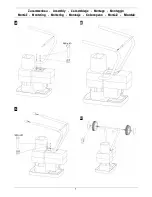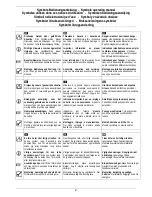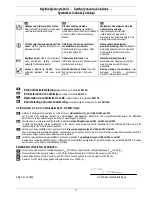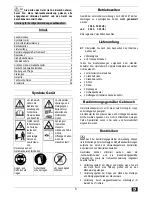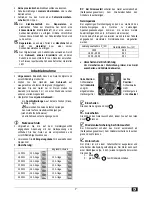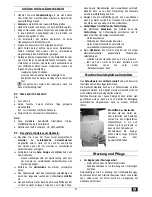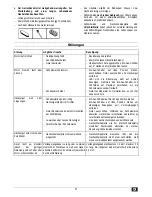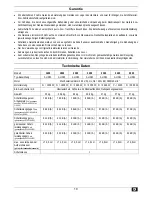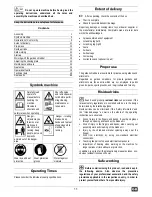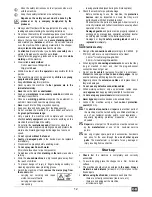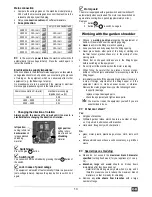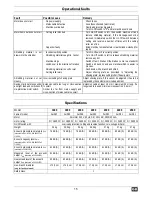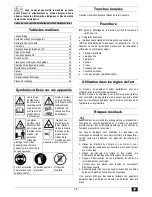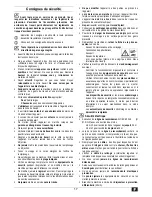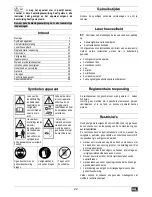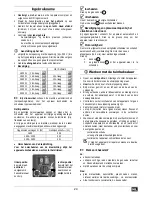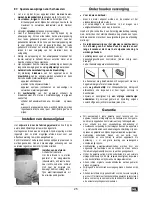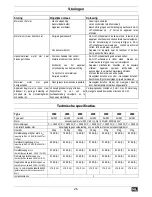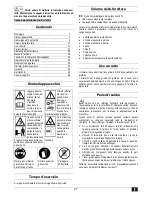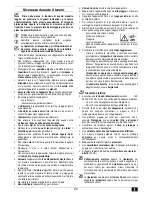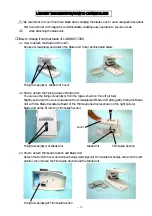
13
Mains connection
Compare the voltage given on the machine model plate e.g.
230 V with the mains voltage and connect the machine to the
relevant and properly earthed plug.
Only use connection cables with sufficient diameters
Fuse protection
only UK and Switzerland
1600 W
10 A inert
1800 W
16 A inert
13 A inert
2000 W
16 A inert
13 A inert
2200 W
16 A inert
13 A inert
2300 W
16 A inert
13 A inert
2400 W
16 A inert
13 A inert
2500 W
16 A inert
13 A inert
In the event of a power failure, the machine will switch off
automatically (zero-voltage initiator). Press the switch again to
restart the machine.
Electrical mains supply impedance
When conditions in the electrical mains supply are un-favourable,
voltage reductions for short periods can occur during the process
of turning on the equipment, which can adversely affect other
equipment (e.g., the flickering of a lamp).
No breakdowns are to be expected if the maximum, electrical
mains supply impedances given in the table are met.
Power consumption P
1
(watts)
Electrical mains supply
impedance Z
max
(
Ω
)
1600 0,28
1800 – 2000
0,22
2200 – 2500
0,21
Changing the direction of rotatio
n
Always switch the device off and wait until it comes to a
standstill before changing the direction of rotation.
left positon:
cutting rollers run
backwards and
release blocked
shredding
material
right positon:
cutting rollers
draw in and cut
shredding
material
Switching on
Press the green I button.
Switching off
You can switch off the shredder by pressing the red 0 button of
the switch.
Lock in case of power outage
The equipment will switch off automatically if there is a power cut
(zero-voltage initiator). Repress the green button to switch it on
again.
Motor guard
The motor is equipped with a guard switch and it switches off
automatically when overloaded. The motor can be switched on
again after a cooling-down period (approximately 5 mins.).
Repress
1.
button A
2.
button green I to switch it on again.
W
W
o
o
r
r
k
k
i
i
n
n
g
g
w
w
i
i
t
t
h
h
t
t
h
h
e
e
g
g
a
a
r
r
d
d
e
e
n
n
s
s
h
h
r
r
e
e
d
d
d
d
e
e
r
r
Choose a working position alongside the equipment or
behind it. Never stand near the ejecting opening.
Never reach into the filling or ejection opening.
Keep your face and body away from the filling opening.
Never place hands, other parts of the body or clothing into
the filler funnel, ejection channel or in the vicinity of other
moving parts.
Check that no chopped residues are in the filling hopper
before switching on the equipment.
Do not tip or tilt the machine when the motor is running.
When filling, be careful that no pieces of metal, stones,
bottles or other objects unintended for processing, enter the
filling hopper.
Immediately switch off the equipment and allow it to come to
a stop, if foreign objects enter the filling hopper or if the
equipment starts to make unusual noises or vibrates.
Remove the mains plug and carry out the following checks:
−
inspect for damage,
−
replace or repair damaged parts,
−
check the equipment and tighten loose parts.
You must not repair the equipment yourself if you are
unauthorized to do so.
What can I shred?
Yes:
•
All types of branches
•
Withered garden refuse which has lain a number of days.
Only shred in alternation with branches.
•
Hard wood, though only with sharp cutter.
No:
•
glass, metal, plastic, plastic bags, stones, cloth, roots with
soil
•
Refuse which does not have a solid consistency, e.g. kitchen
waste
Special tips on shredding:
♦
Please do not exceed the maximum branch diameter
specified (cutting fresh wood) for your appliance (
∅
see p.
15).
♦
Branches, twigs and wood should be broken down
immediately after they have been cut
−
material of this kinds gets very hard when it is dry, and it
therefore makers sense to reduce the maximum branch
diameters, so that it is ready for shredding.
♦
Remove any side shoots from branches with a large
number of twigs.
ON
OFF
A


